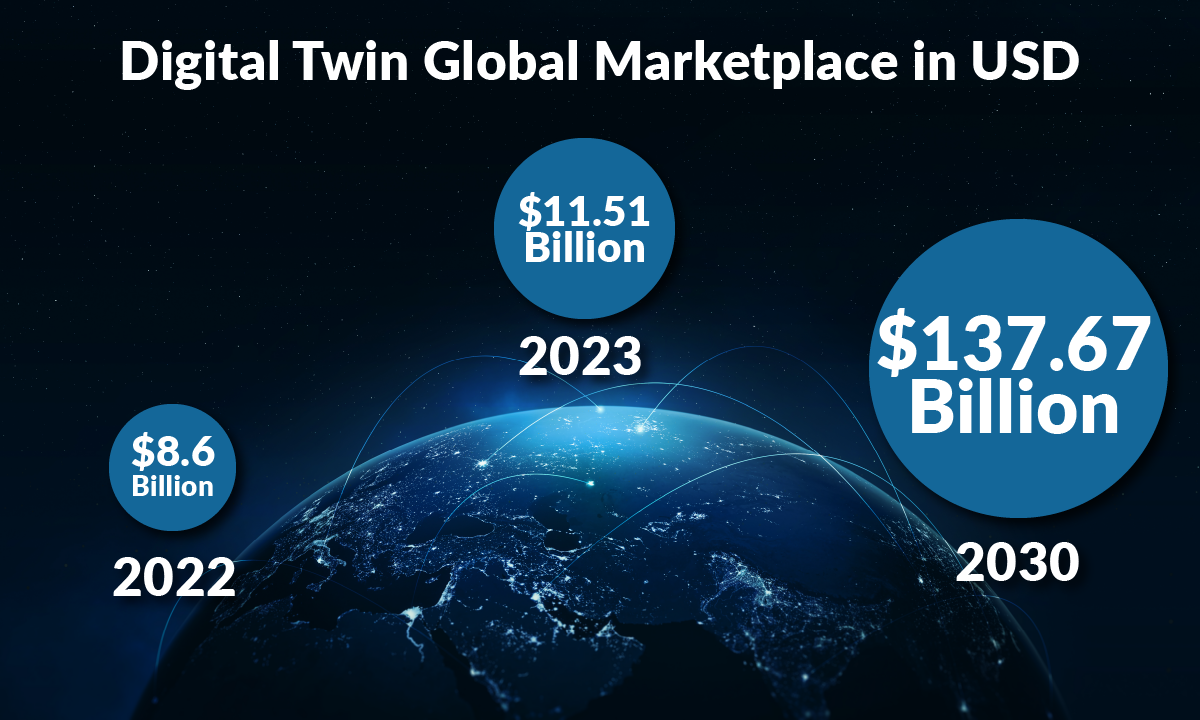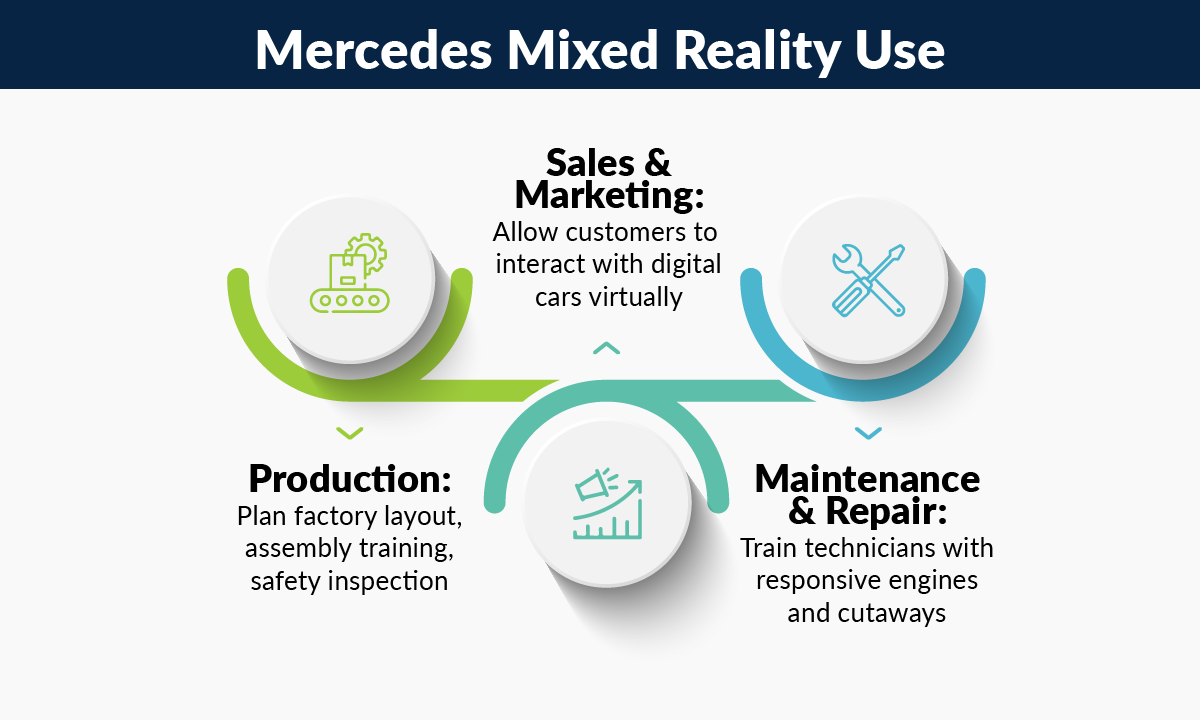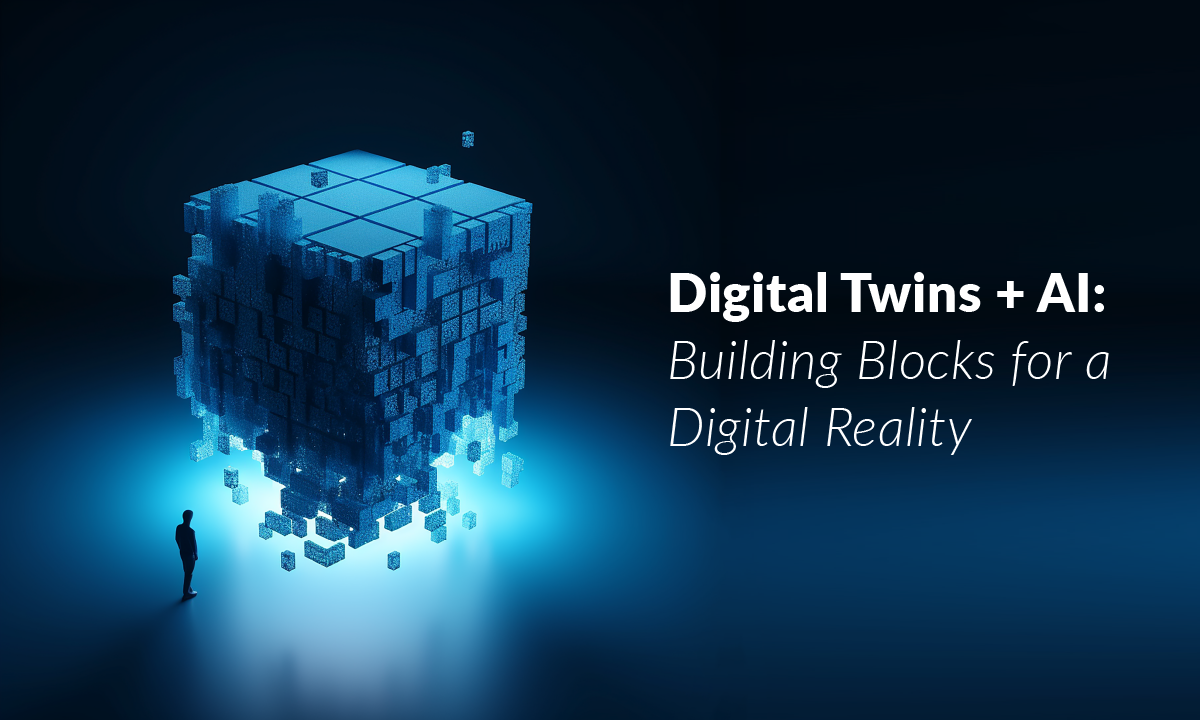From The Matrix to Neal Stephenson’s novel Snowcrash, Ready Player One to cyberspace (like William Gibson’s Neuromancer), our fiction is full of persistent, digital versions of reality. Dubbed a dozen different things with varying criteria, the latest flavor of scale is metaverse.
As a term, metaverse is increasingly hard to pin down, conjuring 3D games on bulky VR headsets, sometimes employed in vague marketing that promises a miraculous (or horrifying) future.
At the heart of these digital parallels of reality are AI-driven, virtual representations of real things. Something that’s already here, and increasingly showing a capacity to scale.
Virtual doppelgängers are here, whether it’s a manufacturing plant or a local coffee shop, the airport or meeting room. Doctors are already experimenting with analyzing potential treatment outcomes using virtual versions of real patients.
As these virtual replicas evolve and grow from a real-time data exchange, they become closer to digital reality solutions than traditional simulations, glimpsing that long-dreamt-of future.
This is the union of digital twin technology and artificial intelligence.

These rapidly emerging industry 4.0 solutions will not only transform business and healthcare, but may also pave the way for a more sustainable and interconnected world.
Where Digital Twins Are Now
While digital simulations are as old as computers, NASA has been using digital twins for closer to 15 years. So what’s the difference?
Simulations traditionally refer to isolated models made to study a specific object, interaction, or occurrence, and are limited in scope, connection, and lifespan.
Digital twins are meant to persist and even evolve. These may begin life as representations of a real thing, first created in a digital space (ala a simulation). They are then connected, so it can be interacted with, adding in live data they can respond to.
AI-driven digital twin solutions go even further, potentially using data in a two-way flow, at a much greater scale, with greater prospect for interconnection, natural language interaction, and growth, offering a far richer parallel to the real, one that can potentially use the past and present to also model glimpses into the future.
[For a detailed at what digital twins are and what benefits they bring today, take a look at our PTP piece Working in Duplicate.]
We already see the AI integration in digital twins beginning in the automotive industry, as with Daimler’s implementation of what they call “mixed reality” across the lifecycle of Mercedes vehicles. These have already been shown to improve time to market and reduce waste.

Many car manufacturers are among the companies already using digital twin technology to see reduced design times, less need for physical models, and improved efficiency, both in manufacturing and configuration.
Large-scale (re)design projects are also making use of digital twin solutions, with examples including a pair of airport projects:
- Vancouver International Airport: Created as part of their Innovation Hub project, the airport’s digital twin aggregates sensor, historical, and real-time data, presenting data in 2D and 3D. It is being used to:
—Relieve passenger congestion at security checkpoints
—Build greenhouse gas calculation models
—Map and analyze aircraft movements for greater efficiency
—Improve personnel training
- Tyndall Air Force Base: Their innovative Hololab allows operators access to a “twinned” virtual base incorporating lessons learned from Hurricane Michael. It allows them to:
—Explore use cases
—View real-time conditions
—Simulate extreme weather
—Test active shooter readiness
—Improve sustainability and overall efficiency
How AI Integrates with Digital Twins at Scale
So digital twins are already in use in manufacturing, automotive, and construction, and, as we looked at above, in large-scale design projects, like airports. Most are companies that already used 3D technology before the explosion of AI.
But as it’s showing with widespread chatbot use, AI can be a great democratizer, arguably giving the biggest boost to users who have the fewest starting skills in the chosen arena.
In this arena, it could provide more people the chance to try digital twins of their own environment, and even themselves.
And while this may be a fascinating concept, the most dramatic gains for businesses will come by helping professionals who already have the skillsets create, maintain, and interconnect digital twins at a much greater scale, much more easily.
Former Amazon executive and Unity’s current President of Create, Marc Whitten, describes ways we will soon realize these impacts in a discussion with Bernard Marr.
In the design phase, AI boosts digital twins by:
- Acting as an accelerator for getting started on that initial leap
- Providing far more fine-grained controls
- Allowing for better, faster, and stronger iteration
It also boosts digital twin effectiveness in real time, by:
- Putting the user in control to request only the specific information they need, which comes back far richer in detail
- Using natural language processing to interact with models instead of working through a user interface
Beyond the Metaverse: Where AI + Digital Twin Integration is Going
In AI-driven digital transformations, we’ll see this technology expand far beyond the fields currently using 3D technology at scale. Consider the following potential digital twin development trends:
Healthcare
Just as medicine is already embracing multimodal AI, expect healthcare to follow suit with AI-driven digital twin development. With the complexity of potential outcomes comes a need for personalization, an area where AI excels.
As with Daimler’s mixed reality—which allows technicians to test outcomes, dive into cross-sections, and change automotive behavior on the fly—we will see AI-driven digital twins used with human patients, wrangling the massive amounts of data and complex interconnection of biological systems. With a digital twin of a specific patient, medical professionals could run procedures and treatments under a variety of conditions and even over time, analyzing results to select the best course forward.
Doctors armed with AI-driven insights from digital twins will make more informed decisions, achieving quicker diagnoses, with greater capacity for tailored intervention. This could also be part of a much-needed shift from reactive care to proactive—and personalized—healthcare.
Digital twins, powered by AI, could bring about dramatic improvements in our healthcare systems, improving efficiency and effectiveness at the same time.
Retail
Right now, most consumers have a choice: go out to a store to handle a product (if it’s available and happens to be in-stock), or go with the far easier, though often frustrating course of online shopping.
In the latter case, you’re best off if you already know what you’re getting, since you’ll have (at best) a series of photographs, text description, and maybe a promotional movie clip. You can’t manipulate the item, get a sense of scale, change colors and features and environment. Turn it on, plug it in, flip it over.
Imagine, instead, an AI-powered digital twin of a store tailored to you as a shopper. It knows preferences, past purchases, and fields current requests to predict what you might want next. With AI algorithms analyzing behavior, the retail space can be transformed to suit your tastes and needs, blurring that line between the physical and digital. Here you’d have a pragmatic metaverse or cyberspace that looks and feels far closer to reality than we may have imagined possible.
It may not be science fiction for long to try on virtual clothes in your own home before buying, while also getting personalized discounts in real-time.
Entertainment
Another more obvious example of this transformation is in entertainment, where 3D models and virtual realities have long been in use in gaming.
Any gamer knows that AI character models and NPC behavior have largely stagnated, but with AI, improved movement and personalization will trigger a massive step-forward in how immersive these experiences are.
One area that’s already seeing AI-bolstered work is NPC psychology, where computer-generated game characters behave more like real people, even in cities full of them.
Taking this further, consider how the storytelling itself can be transformed, where a game’s events could come about more organically, rewriting and developing outcomes around player interaction.
And as with all of these examples, a lowered bar should mean more creators can break into the field more easily, using AI as a personal assistant or agent to help cover aspects of entertainment creation not currently possible.
Consider, as a parallel, how changes to camera technology and media distribution have opened the door to millions of YouTubers and Tik-Tokers. AI empowered digital twins could do the same for gaming, and gamified content, such as in education and workplace training.
Sustainability
Digital twin technology is already improving sustainability, by providing greater efficiency, be it with airplane movement (burning fuel, generating emissions), factory layout, or by making it possible to design with fewer physical production models.
Also consider how predictive maintenance can ensure machinery operates at optimal levels, reducing the need for frequent replacements and minimizing the environmental impact. At the end of a product’s life, a digital twin can be used to help identify what parts can be salvaged, and when.
With the added scale, data-wrangling, and interconnection enabled by AI, consider applying the airport examples above to smarter cities, where digital twins bolstered by AI could provide improved traffic flow, energy consumption, and waste management in real-time. Imagine traffic lights that adjust dynamically to traffic patterns, reducing congestion and emissions. Buildings optimized to streamline their consumption based on the prediction of models over a variety of conditions, such as occupancy and season.
Conclusion
With all the variation in use case, scale, technologies, and methods of deployment, it’s unlikely we’ll see some singular, seamless space connecting varying organizations all in one holistic virtual landscape (as in The Matrix, or Ready Player One) any time soon. (It’s not clear how safe, or desirable, such a thing would be, even if possible.)
But by merging the power of artificial intelligence and digital twins, we do have a path to the creation of useful, virtual landscapes, whatever you call them (digital realities, metaverses, cyberspace)—where efficiency, personalization, and sustainability converge in ways long imagined, but largely unrealized.
As with all AI innovations, the power brings additional responsibility, as inherent in all these examples is the acquisition and use of ever more personal data, and the building from, and training off of, ever more source data, which itself must be diverse in scope, properly attributed in source, and ethically distributed by benefit. The more personalized the technology, the greater the risk, and steeper the challenges in safeguarding it.
Still, with such promise to improve quality, save lives, bolster sustainability, and increase efficiency, this is a risk worth taking, as the potential rewards for all of us are too great to pass up.





